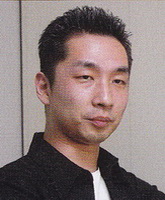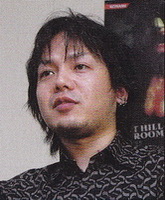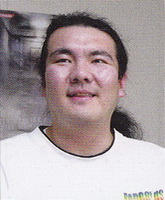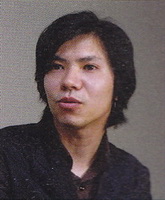Silent Hill 4: The Room Staff InterviewDate published: 2004.07.14 An interview with members of the production staff who created Silent Hill 4: The Room. Here, the team members speak candidly about the form the actual game took.  Design Team Side InterviewMasashi Tsuboyama/Jun Inoue/Naomi Hara  Our goal in designing Room 302 was to give it a sense of reality - like you were really living there First off, could I ask you to tell us what parts of the game you each designed? Inoue: I was involved with designing the creatures this time. Hara: I did the character design. Mr. Tsuboyama, I understand you oversaw the design work in general; is that correct? Tsuboyama: That's right. I mainly designed the creatures and ghosts, and then I oversaw the design of the game as a whole. I was involved with SH1 & 2, so it was also my role to incorporate the traditional Silent Hill elements in SH4. So did you all collaborate on the general vision for the game? Tsuboyama: At the start of planning, the core team members contributed a variety of designs & proposals, and it felt like little by little, an image of the game was coming together. Everyone, designers & programmers alike, came together and gave some thought to our vision for the game. What were your design goals for Room 302? Tsuboyama: The game is set in the U.S., but our goal in designing the room was to give it a sense of reality - like you were really living there during the time you were playing the game. I think that even in everyday life, there are many things you encounter throughout the day that can give you a sense of fear, but in the Silent Hill series, it's a matter of how much of a sense of everyday life and reality we can make the player really feel. How did you design the Otherworld? Tsuboyama: The plan was for the Otherworld to be a world that Walter had created, and that Henry, from Room 302, would get caught up in it. By "a world that Walter had created," I mean that it's made up of the things that had left an impression on him in his life...the things he perceives in his mind, so the stages are formed out of the places Walter has been and fragments of his memory.
Ms. Hara, which of the cast members were you involved in designing? Hara: As of now, all of them. The only characters where I was involved designwise from the very start are child Walter and Cynthia. At first, each character was assigned to a staff member, but the number of character designers involved increased during the production process, so I took on a coordinating role and was involved in every character's design in some form. Also, in order to better integrate our work with the series' approach to characters, we also asked Mr. [Shingo] Yuri, the character designer for the previous installment, to be a coordinator. Speaking of which, the hero of this installment is a very ordinary young man, isn't he? Hara: For this title, we had a concept where we wanted to bring out the realistic, everyday aspects of the game, so the main character, Henry, isn't this super-cool guy with anything special about him. We designed him to emphasize the idea of how he's an ordinary man you could find anywhere - who just happens to be living in this ordinary apartment. I suppose he had a more distinctive look to him at first? Hara: Yes, he did! At first, his design was a little too ordinary! He had his shirt tucked into these super-high-waisted pants (laughs). His shirt wasn't white, either. The character and the scenery design progressed independently of each other, and when they came together, we decided that it might be better for him to be in a slightly brighter color, one that was better-suited for the environments, so we changed him to his current outfit. What kind of image did you have in mind for with the heroine, Eileen? What sort of woman did you want to create? Hara: We wanted to make Eileen the cutest female in the series yet... (laughs) Usually, you want the "girl next door" to be this ravishing beauty, but most of the time, it's just an ordinary person living there, isn't it? I designed her with that sort of everyday quality in mind. I tried to bring that out in her figure, too - her legs are chubby; her rear's kind of big and plump.
What was the design concept for another member of the cast, the most important character, Walter? Tsuboyama: The characters this time have an ordinary feel to them but also are more on the good-looking side. So far in the series, our characters have been pretty much all underachievers, so we tried to give a kind of memorable look to them that leaves an impression. When you look at illustrations of Walter, he seems like a nice, normal guy, but he's actually quite a scary individual, isn't he? Were there any aspects to which you paid special attention in using this approach? Tsuboyama: Not particularly, but I thought that instead of having someone be scary by looking scary, it would be more effective to do have them do cruel things with a kind expression always on their face. It's like, they always have this nice look on their face, but you can't understand what they're thinking. So that's why Walter's eyes and whatnot are always ever-so-slightly averted. So, do you two have any favorite characters? Are there any inside stories you'd like to tell us about? Hara: If you clear the game under certain conditions, Eileen's costume will change. Creating a pretty rare costume for Eileen as a sort of bonus element was the thing I enjoyed the most. Tsuboyama: I guess mine was Richard's ghost. To have an enemy that moves like a record scratch isn't something we've done before, I don't think. Richard's ghost has this design that seems like something anyone could think up - he looks like a zombie, an everyday middle-aged man. But he has this bizarre way of moving and such that we went out of our way to emphasize. I myself really thought that was an interesting part of this installment.
Mr. Inoue, which of the creatures and ghosts did you design? Inoue: Of the creatures, I designed the sniffer dogs and the wallmen, and then I designed a lot of the ghosts. This is the first appearance of ghosts in the series; how did you approach bringing out their ghostly natures - their wandering about, crying out for help? Inoue: I wanted to accentuate the individuality of each separate ghost in a realistic fashion, because I thought that there was nothing scarier than being attacked by a human being. The distinguishing characteristics of each ghost were determined from the start, so I designed their external appearances. One of the things I thought was scary about the ghosts was how they remain as they were in life, yet they're not alive... What about the way the ghosts move - was that an aspect into which you put particular effort? Tsuboyama: Yes, it was. Programwise, we did things we hadn't done before, such as using IK handles to make them slide along on uneven ground with their legs trailing behind them, having their movements react to their environments in real time. The creatures are manifestations of things from Walter's subconscious mind, and the ghosts are the people who Walter has killed, trapped in this world and wandering about. So to the murder victims, Walter's world is this hazy, indistinct realm that they don't yet really understand, which is why they break through walls, etc. I see. Could you each tell us about the creatures and ghosts you think work especially well - the enemies of which you're particularly proud? Inoue: I created Victim 16, the ghost version of Cynthia who appears on poster treatments. I thought that ended up being pretty scary. Tsuboyama: Me too; the image has that classic Japanese horror vibe you see even today, but I hope that it scares players by how bizarrely it moves and such. Finally, could you tell us about any rejected creatures or characters you wanted to create? Tsuboyama: There was something giant...something like when it was walking around, you could see only part of it at a time. I wanted to create something where you gradually got a better sense of what it looked like as it walked around. Inoue: I was thinking how it'd be neat to make a creature that would appear to be human but whose silhouette was something else entirely. Hara: I wanted to create a person so grossly fat they couldn't leave the room, or, since there aren't any middle-aged or elderly female characters, I wanted to have a woman who was a bit wrinkly appear in the game. I also wanted to try my hand at creating a cute, clear-cut heroine-type character, or a pretty heroine.
So that means maybe we'll see those characters if another installment is made! Thanks to everyone on the design team.
Scenario/Sound/Programming Team Side InterviewAkira Yamaoka/Suguru Murakoshi/Hideyuki Fujii/Masato Akiyama
What exactly was your concept this time around?
Your safest place not being safe anymore...that is scary. I think it'd be pretty hard to make into a game, though... Yamaoka: Yes, you're right. That's why the "room" aspect of this title also becomes a crucial part of the game system. The Room 302 parts, though, take place from a first-person perspective. It has the effect of making the player feel like they're right there in their own room. Plus, I also feel like we have a variety of neat tricks in store for the player there.
Tell us about the details of the production of SH4 and any aspects where you had to experiment to get things right.
Like The Room: Silent Hill, maybe? Murakoshi: Simply speaking, yeah. And so, at the very start, we took 2-3 months to plan things out. The production work for SH2 had just ended, so we were talking with each other about how accomplished it was and such, and we started deciding to what extent we wanted to make changes and do something new. So, we came up with three fairly polished plans, and we chose the scariest one - that was how it went. So how did The Room end up being the subtitle for the game? Yamaoka: We wanted to express the idea that Silent Hill was moving in a new direction. We reasoned that with a title of Silent Hill 4: The Room, it would be recognizable to a great many people as "a new Silent Hill", but they'd understand right away that while it's at heart a Silent Hill game, it's different from what came before. This time, you can't get a sense of the overall scenario right at the start of the game, can you? Murakoshi: That's right. It's like the story reveals itself little by little as you go back and forth between the real world and the Otherworld. I mean, it's like we want players who are here for the story to actively decipher the plot; in other words, we wanted to present the story in a way where Henry played an active role in unraveling the plot. Therefore, while there are events that are crucial to the plot, there are also events in the game that aren't essential! For example, you can look out the peephole, but except for a few scenes, it's not mandatory! If you, the player, don't actively search and investigate, you won't get the full story. We did this because we didn't really want to have the game push the plot on the player. Those who want to savor the plot can slowly digest it, and those who enjoy action can leave the mystery of the plot behind and focus on controlling Henry. There are many different play styles, so this is one of the ways we responded to that.
Mr. Yamaoka, please tell us about the areas to which you paid special attention for the sound for this game. Yamaoka: I've been involved with Silent Hill for a long time, ever since SH1, and the things on which I focus haven't changed. First & foremost is that I want to present you with something that you can't hear in any other game. With ordinary game music, there's an idea of, well, you have music playing at this point and this point...it's almost akin to a system limitation, and I wanted to deviate from that. Like, I want to put music here, but, well, that'd be expected, so let's not do it. So I won't have music or anything play at that point. One of the components of a game's "interactivity" is the rendition of the information that reaches you through your ears, I think! I use it in the hopes of provoking reactions from players - like, for example, having sudden jarring noises ring out like they're in a factory, and startling them or making them think, oh, that sounds horrible. One of the ideas I've been particular about is how the audio material playing throughout the game doesn't need to be music - it doesn't matter if what's playing is music or sound effects. That's been a mainstay since SH1, and that hasn't changed in SH4. So I suppose your method of creating the music is also unique. Yamaoka: Yes, it is! I ended up making the soundtrack on my own first, instead of the game coming first and me putting music & sound effects to it. In other words, my method is to start by making track after track, and then to put in the audio that suits the game. So for this game, we have what we're calling a (Konami Style Exclusive CD) "soundtrack," but a full third of the soundtrack consists of nothing but audio that wasn't used in the game. (laughs) Were there any areas that posed a particular problem in bringing your ideas to life? Yamaoka: When I actually get into the programming side of things, it's really hard - creating the audio's a real hassle! Making sure not to make any noise, adjusting the volume levels via the performance, creating sounds that are muffled so that they seem like they're coming from next door... It's a pain to go through all that work, but on the other hand, if I don't do it, I don't think the player gets a realistic experience in-game.
Mr. Akiyama, you're handling the event programming; what are your tasks, specifically? Akiyama: To give an example, in the forest, there's a little boy, and when you approach him, something happens...creating those sort of mechanisms that trigger cutscenes, as well as putting them in place, is event programming. With items that have been placed, it also involves making sure text pops up saying "This is blah blah blah" when the player examines them, making sure all the appropriate reactions are triggered - that's all part of event programming.
The "playable cutscene" concept is new for the series. I understand that you were deeply involved with it, Mr. Akiyama; on what areas did you focus?
How would you describe the "playable cutscene" concept, simply speaking? Akiyama: On the team, we're calling them "half-cutscenes." Or "0.5 cutscenes" or something. (laughs) Yamaoka: Basically, in a game, the player operates a controller to move the character, right? And at certain moments, there are movie-like scenes etc. where the character can't be controlled. So the game is largely split into two parts - there's the part that we call the "cutscenes," and the playable part where you're operating a controller. With the cutscenes, when the movie starts and you can't control the character at all, you're just watching, right? When that happens, you've become an objective spectator, and you mentally detach yourself from the world of the game. We used our "playable cutscenes" to get rid of that sensation. This means that the player can maintain control and still see the cutscene. For example, with the cutscene where you meet Jasper in the forest, in a normal cutscene, the player would just go over to Jasper and sit doing nothing while he spoke. However, in SH4, you can still move the character around by yourself, just as you were before the cutscene. Furthermore, since the player is also an active element in the cutscene, if you move away from Jasper, his voice will also become fainter. That's what we mean by "playable cutscenes."
Did you pay pretty close attention to the unique differences in the movements of the creatures and the ghosts?
Were there any parts of that process that were particularly difficult? Fujii: Making their arms & legs move naturally, making them grab onto things naturally - yes, those movements were particularly problematic. There aren't any models for the creatures and ghosts, so making them move "naturally" in programming is one continual process of trial and error. Finally, I'd like to hear how from all of you how you would put the "fear behind Silent Hill 4" into words. Fujii: I would call it something like an "unbalanced fear" - how the ghosts look unexpectedly like living human beings, but they move so strangely. Akiyama: You can look out your window and such from Room 302, but there's absolutely no intervention from outside, no interaction. That's part of the "fear of isolation" that I think is new for this installment - the idea that, ultimately, you're all on your own. And so this time, the protagonist is a unilateral victim, right - just in the worst possible circumstances. Every time he goes to the Otherworld, he's attacked by these restless souls, and he doesn't even know what's happening with his own situation, yet this impending doom just keeps bearing down upon him - so there's also that fear, I think. Murakoshi: This has been present throughout the series, but there's a "fear of the abnormal." In this game, it's how ordinary things are just a little off somehow, and that's where you find the fear that's unique to Silent Hill, I think. Also, the foremost concept we had for the plot was "terror," but we wanted to make sure that it didn't stop at simple scariness. We didn't want the game to merely frighten you; we wanted to deliver shocks that lingered in your heart - to incorporate something that went beyond fear. Yamaoka: So far, I think the idea of fear you can't see, with the fog and the darkness, has been front and center in the Silent Hill series. In this installment, however, we're portraying a different kind of fear - the fear of being pursued, but not knowing what is chasing you. So, to sum up, I'd state it as "the fear of being hunted."
Thanks to everyone on the scenario, sound, and programming teams.
|
|||||||||||||||||||||||||||||||||||||||||||||||||||||||||||||||||||||||||||||||||||








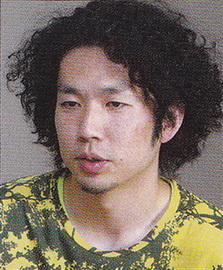
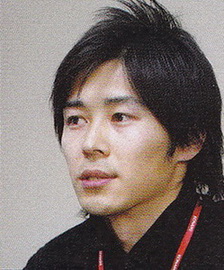
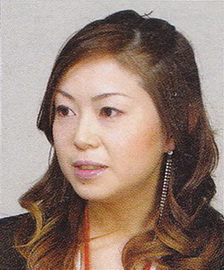

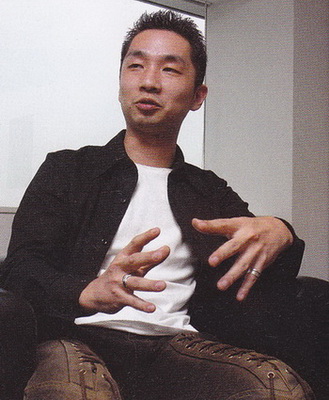 Yamaoka: Our concept was, of course, the surface and the hidden - in other words, reality and the Otherworld. I think it's a worldview that's unique to Silent Hill. Also, the world of Silent Hill so far had been founded on the concept of a town - of one giant map that you traverse. For this game, just like the subtitle says, we wanted to go with the theme of a room. Your own room is the place where you feel the safest, right? Well, what if you couldn't get out of that safe place?! What if you were stuck inside?! And what if that room were surrounded by terror?! There isn't anything scarier than that, I thought. And that's the foundation of SH4 - the combination of that idea with the element of reality and the Otherworld that's the hallmark of Silent Hill.
Yamaoka: Our concept was, of course, the surface and the hidden - in other words, reality and the Otherworld. I think it's a worldview that's unique to Silent Hill. Also, the world of Silent Hill so far had been founded on the concept of a town - of one giant map that you traverse. For this game, just like the subtitle says, we wanted to go with the theme of a room. Your own room is the place where you feel the safest, right? Well, what if you couldn't get out of that safe place?! What if you were stuck inside?! And what if that room were surrounded by terror?! There isn't anything scarier than that, I thought. And that's the foundation of SH4 - the combination of that idea with the element of reality and the Otherworld that's the hallmark of Silent Hill.

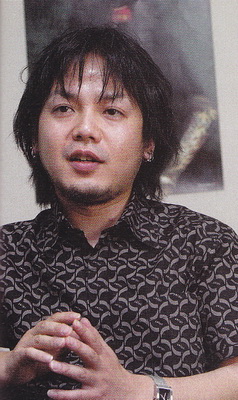 Murakoshi: Production on SH4 began right after production on SH2 ended. We actually moved forward with SH3 & SH4 at the same time. One thing we discussed this time was "creating a new Silent Hill." We even originally started out with the intention of having the Silent Hill name as a subtitle.
Murakoshi: Production on SH4 began right after production on SH2 ended. We actually moved forward with SH3 & SH4 at the same time. One thing we discussed this time was "creating a new Silent Hill." We even originally started out with the intention of having the Silent Hill name as a subtitle.

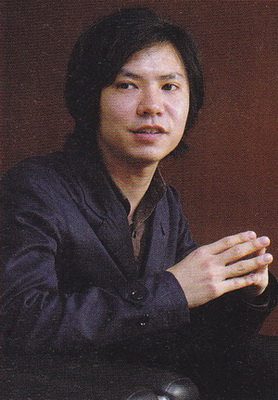 Akiyama: I didn't want to interrupt the overall flow of the game, and I was concerned about how we could take having someone just talking away beside a player-controlled Henry and have it come across as extremely natural. There are special tricks - from a programming angle as well - to creating a "playable cutscene"; it's not just taking stock of motion data as usual.
Akiyama: I didn't want to interrupt the overall flow of the game, and I was concerned about how we could take having someone just talking away beside a player-controlled Henry and have it come across as extremely natural. There are special tricks - from a programming angle as well - to creating a "playable cutscene"; it's not just taking stock of motion data as usual.

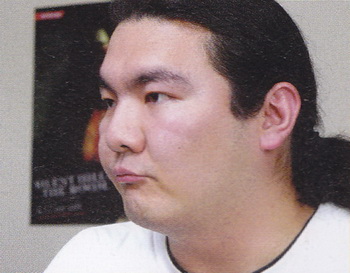 Fujii: The designers are also responsible for devising how the characters move, so we did indeed pay special attention to how to bring those ideas to life in programming.
Fujii: The designers are also responsible for devising how the characters move, so we did indeed pay special attention to how to bring those ideas to life in programming.

